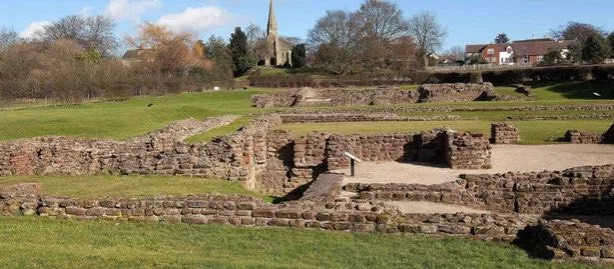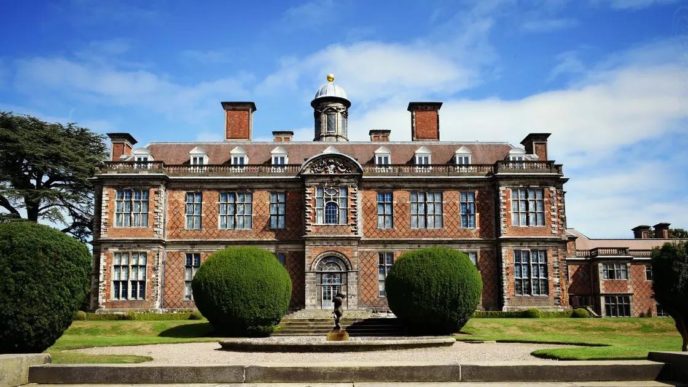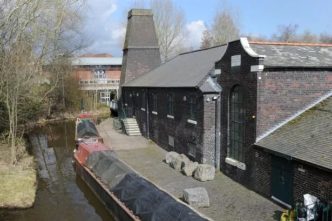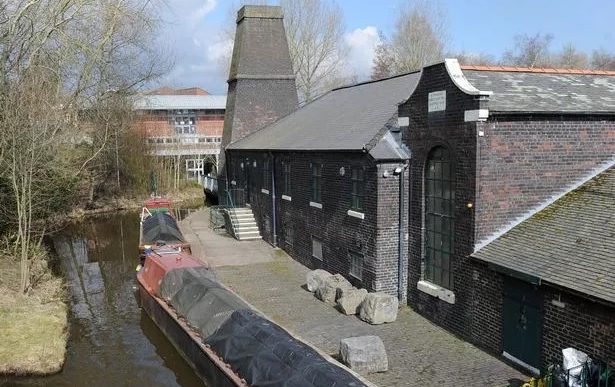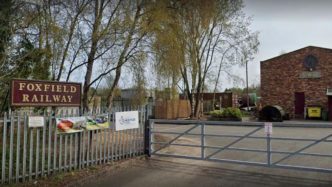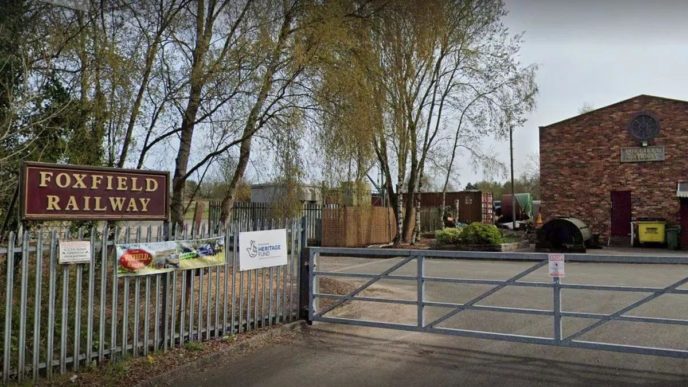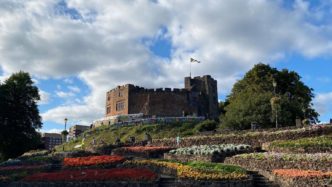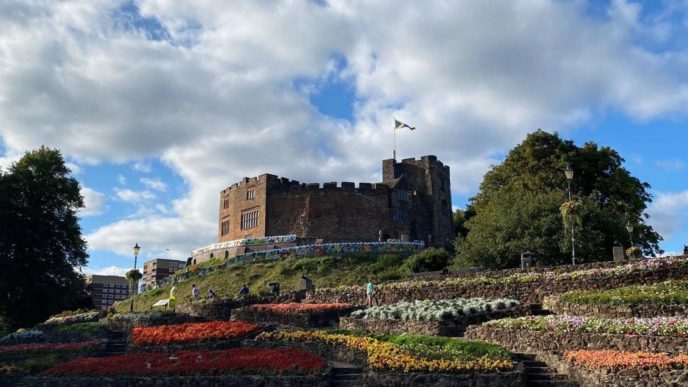Step back in time at the Wall Roman Site, nestled in Staffordshire, where the echoes of the Roman invasion of Britain still resonate. Here, within the remnants of a Roman town at Wall, you can wander along the ancient trackway, once paved and bustling with the numbers of soldiers and travellers. Wall sits on Watling Street, a significant Roman road, and was home to a scale posting station vital for communication and transport during the empire’s peak.
Discover the Wall Roman Site: An Introduction
The Wall Roman Site, set in the picturesque countryside of Staffordshire, is more than just an archaeological treasure; it’s a unique window into the lives of those who walked these grounds in the 1st century AD. The Roman town at Wall, known as Letocetum, stood at a crossroads of culture and history, thriving well into the 2nd century. Its importance is rooted in its role as a key military staging post and settlement, providing a glimpse into the Roman way of life in Britain.
What makes the Wall Roman Site unique is its remarkably preserved baths and the inn ruins, which paint a vivid picture of the bustling activity that once characterised this town. Visitors can explore the foundations and imagine the warmth of the baths that served weary travellers and the chatter that filled the inn. This is a place where ancient stones tell tales of commerce, rest, and the daily routines of Roman Britain.
The site’s unique charm also lies in the small details: the layout of the rooms, the remnants of the hypocaust heating system, and the artefacts that have been unearthed here. These elements offer a tangible connection to the past, allowing you to touch, see, and feel history rather than just read about it. It’s an immersive experience that brings the sophistication and complexity of Roman civilisation to life.
At the Wall Roman Site, you’re not just visiting an old ruin. You’re stepping onto a stage where history unfolded. Each stone and artefact is a piece of a larger story that shaped the world we know today. It’s a place that invites curiosity and leaves visitors with a profound sense of connection to the ancient world.
Getting to the Wall Roman Site
Embarking on your journey to the Wall Roman Site is straightforward, whether driving, taking the train, or enjoying a scenic walk. If you’re coming by car, rest assured that parking is available 50m from the entrance, making it convenient for you to start your adventure. The site is well-signposted, and you’ll find it easily accessible from major roads, making it a hassle-free trip for drivers.
If you’re considering public transport, the nearest train station is just a short bus ride away. From there, local buses will drop you close to the site, and it’s just a brief stroll to step back into history. For those who prefer to travel on foot, the Wall Roman Site is a gem that lies on a well-trodden path, inviting walkers to experience the landscape just as the Romans did.
For visitors who require wheelchair access to the Roman site, facilities are in place to ensure that everyone can enjoy this historic destination. The paths are well-maintained, and although some areas might be more challenging to navigate, assistance is often available to ensure you don’t miss out on any of the site’s wonders.
However you choose to travel, the journey is part of the experience. Whether it’s the anticipation of discovering something new or the tranquil beauty of the Staffordshire countryside, getting to the Wall Roman Site is an integral part of your historical adventure. And with each mode of transport offering its unique perspective, you can make the trip as memorable as the destination itself.
A Glimpse into the Past: The Inn’s Ruins
The inn’s ruins at the Wall Roman Site is a testament to the area’s rich history. Founded during the expansion of the Roman Empire, the inn provided lodging and comfort to travellers and soldiers alike. Its creation, alongside the baths, marked Letocetum as a significant stop along the Roman military road network.
Before its establishment as a bustling inn, the site was originally utilised by the Romans as a fortification during their conquest of Britain. The strategic location allowed for control and surveillance of the surrounding area, playing a critical role in the Roman military strategy.
Over the years, the inn witnessed countless stories and events, becoming a hub of activity and rest for those journeying across the Roman Empire. While the names of the individuals responsible for its creation have faded into history, the legacy of their work endures through the ruins that captivate visitors today.
Significant events, such as the changes in Roman Britain’s administrative structure and the eventual decline of Roman influence, are echoed in the layers of the inn’s archaeological remains. These ruins provide invaluable insights into the Roman way of life and the passage of time that has shaped the site we explore today.
As you walk among the ruins, you can almost hear the clinking of glasses and the murmur of conversations from a bygone era. Each stone is a piece of the puzzle that was once the thriving inn, offering a rare opportunity to connect with the past and the people who made history here.
What to See and Do at the Wall Roman Site
The Wall Roman Site is a treasure trove of attractions waiting to be explored. The ruins of the bathhouse and inn are the main highlights, inviting you to imagine the bustling life that once filled these spaces. Walk through the ancient rooms and corridors, and marvel at the engineering prowess displayed in the surviving hypocaust system.
Away from the main ruins, you’ll find hidden gems such as the on-site museum, housing a collection of artefacts that tell the story of the site’s history. From pottery shards to coins and personal items, each piece adds depth to your understanding of Roman life in Britain.
For a truly immersive experience, participate in one of the many activities and events that often take place at the site. Re-enactments, guided tours, and hands-on workshops allow you to step into the shoes of a Roman citizen, soldier, or traveller, providing fun and educational experiences for visitors of all ages.
The surrounding landscape also offers opportunities for exploration and reflection. Take a stroll along the ancient Roman road of Watling Street, which cuts through the countryside, or find a peaceful spot to picnic with views of the ruins and the idyllic scenery.
Tips for a Superb Time
To ensure you have a fantastic visit to the Wall Roman Site, it’s key to plan ahead. Start your day early to make the most of the quiet morning hours, and consider scheduling your visit on a weekday to avoid the weekend crowds. Bring a camera to capture the historic ruins and consider packing a picnic to enjoy in the surrounding green spaces, as it adds to the charm of the experience. Remember to wear comfortable footwear as you’ll be doing quite a bit of walking.
Participating in a guided tour can greatly enhance your understanding of the site’s history and significance. Keep an eye out for special events or re-enactments that often take place, which can make your visit even more memorable. If you’re keen on supporting the site’s preservation, look for opportunities to donate. These contributions help maintain the ruins and fund educational programs that contribute to community development.
Engage with the displays and take the time to read the informational plaques dotted around the site. They provide valuable context and help bring the ancient world to life. Chat with the staff; they’re usually local enthusiasts who can share fascinating tidbits not found in guidebooks. Lastly, consider purchasing souvenirs from the gift shop as it supports local artisans and serves as a reminder of your journey into ancient history.
Planning Your Day: Practical Information for Visitors
The Wall Roman Site was once a staging post on Watling Street, a key Roman military road to North Wales. This road network was crucial for the control over their empire, providing lodging for the weary Roman officials, soldiers, and imperial messengers. Today, the site offers a fascinating insight into life back then and displays many excavated finds. The museum provides a sequence of cold, warm, and hot rooms, identical to the inn for travellers and the public baths that once stood here.
Opening Hours
The Wall Roman Site welcomes visitors throughout the week. Opening hours are from 10:00 am to 5:00 pm during the summer months, with the last entry at 4:30 pm, allowing ample time to explore the ruins and museum.
Entry Fees
Adults can enter the Wall Roman Site for a fee of £5.00, while children are charged £3.00. Family tickets are available at £13.00, which covers two adults and up to three children. There are also concession rates for seniors and students at £4.00. Group discounts may be available, so do inquire if travelling in larger numbers.
Best Times to Visit
The best times to visit the Wall Roman Site are during spring and autumn when the weather is mild and the site is less crowded. These seasons offer a pleasant atmosphere for exploring the ruins and surrounding landscape.
Facilities and Accessibility
The Wall Roman Site has a range of facilities to make your visit comfortable. You’ll find clean washrooms readily available, and for those feeling peckish, eateries are serving delicious local fare. Picnic areas are also provided for those who prefer to bring their own food.
Accessibility for the disabled is a priority, with ramps and dedicated pathways ensuring everyone can enjoy the site. Marked parking spaces are available for bikes, small cars, vans, and buses, making it convenient for all types of visitors to arrive and explore.
Seating areas are strategically placed throughout the site, allowing you to rest as you take in the views. For families, there are baby-changing facilities, ensuring that even the youngest visitors are catered for. And don’t worry about getting lost; informative maps are located around the site to guide your journey.
Should you have any questions or need assistance during your visit, the friendly staff are always available to help. They can provide additional information on the history of the site, as well as any other queries you may have.
Finally, the site’s gift shop is a treasure trove of souvenirs and educational materials. Whether you’re looking for a memento or want to learn more about Roman history, the shop has a variety of items to choose from.
Safety and Etiquette
For a safe visit to the Wall Roman Site, it’s important to stick to the marked paths and respect any barriers around the ruins. This not only ensures your safety but also helps preserve the ancient structures for future generations. Remember to dispose of any litter in the bins provided to keep the site clean.
Please refrain from climbing on the ruins or taking any artefacts from the site. These actions can damage the valuable historical context that the Wall Roman Site represents. Additionally, maintaining a respectful volume while exploring helps everyone enjoy the tranquil atmosphere.
When interacting with the exhibits, be gentle and avoid touching any items that are not meant to be handled. This helps preserve the exhibits in their best condition. It’s also courteous to give way to other visitors, especially in narrow areas or when viewing popular displays.
Lastly, for those bringing pets, please keep them on a leash and under control at all times. This ensures the comfort and safety of all visitors and protects the local wildlife. By following these simple safety tips and etiquette guidelines, your visit to the Wall Roman Site will be not only enjoyable but also responsible and mindful of preservation efforts.
The Local Food Scene
When you visit the Wall Roman Site, your adventure isn’t just about the ancient ruins; it’s also about savouring the tastes of Staffordshire. The local food scene bursts with traditional dishes loved for their hearty flavours. Think of biting into a warm Staffordshire oatcake, a local favourite that wraps your choice of fillings in a soft, pancake-like embrace. For a sweet treat, you can’t miss the melt-in-your-mouth buttery delight of a Staffordshire shortbread.
The nearby eateries proudly serve up these classics along with a selection of British pub staples, such as bangers and mash, and the ever-so-comforting cottage pie. Each dish tells its own story of the region’s agricultural heritage, with locally sourced ingredients that support the surrounding farming communities. Whether you’re tucking into a succulent roast dinner or enjoying a hearty stew, the local cuisine is sure to leave you feeling satisfied and connected to the essence of Staffordshire.
Vegetarian or fancy something lighter? Many cafes offer fresh salads and sandwiches, with ingredients often picked from local gardens. And let’s not forget about the cheese – Staffordshire is known for its delicious cheeses, which you’ll find gracing the menus of many local establishments. Pair them with a local ale or cider for a truly authentic dining experience.
For those with a sweet tooth, the region’s desserts are a must-try. Indulge in a slice of the famed Bakewell tart or a steaming portion of spotted dick, both of which offer a taste of England’s culinary tradition. These sweet delights are often enjoyed with a pot of fresh, hot tea – a quintessentially British ritual.
Exploring the local food scene is a feast for the senses that complements your journey through time at the Wall Roman Site. Each bite not only tantalises your taste buds but also brings you closer to understanding the legacy and love the people of Staffordshire have for their food traditions.
Where To Stay for a Convenient Visit
After a day of exploring, you’ll want a comfortable place to rest. The area around Wall Roman Site boasts reputable hotels and inns, each offering amenities to make your stay delightful. Consider the charming Coach House, where the cosy rooms and friendly service will have you feeling right at home. It’s known for its delightful breakfast spread that sets you up perfectly for a day of adventure.
If you’re looking for a touch of luxury, the Manor Hotel, with its plush rooms and top-notch facilities, including an on-site spa, is a splendid choice. Guests often rave about the serene atmosphere and the hotel’s commitment to ensuring a relaxing experience. Plus, it’s just a short drive from the Roman site, making your travel plans a breeze.
Family-run guesthouses are another excellent option, offering that personal touch with home-cooked meals and warm hospitality. The Old Rectory, for example, provides a picturesque setting with its beautiful gardens and traditionally decorated rooms, capturing the essence of the English countryside.
For those who prefer modern conveniences, the City Inn offers contemporary rooms with all the essentials, including Wi-Fi and convenient access to local transport links. It’s a fuss-free option for travellers who appreciate efficiency and practicality. Each of these accommodations ensures a restful night’s sleep, leaving you recharged for another day of discovery.
Extend the Fun: Nearby Attractions
The wonders around the Wall Roman Site don’t end at the ancient ruins. Just a short journey away, you’ll find the vibrant art gallery in the city centre, where contemporary works and classic pieces tell a story of the region’s artistic evolution. It’s a hub of creativity that art enthusiasts will find enthralling.
For families, the interactive map at the on-site museum of Letocetum Roman Baths Site offers an engaging way to learn about the area’s history. Children and adults alike will be captivated by the digital journey through time, making education fun and accessible.
History buffs won’t want to miss the opportunity to visit the nearby towns of Wroxeter and Chester, where you can walk the paths once trodden by the Roman army. With their well-preserved archaeological remains, these towns offer a deeper dive into the impact of the Roman invasion of Britain in AD 43.
Should you seek tranquillity amidst nature, consider a stroll in the National Trust’s beautifully maintained gardens. Here, the blend of horticulture and history creates a serene environment, inviting you to reflect and relax. Each nearby attraction offers a unique perspective on the region’s rich tapestry, ensuring your visit is filled with diverse and memorable experiences.
Frequently Asked Questions
Can I bring my dog to the Wall Roman Site?
Yes, dogs on leads are very welcome! Visitors love to walk their furry friends along the ancient paths but remember to keep them on a lead to protect the archaeological remains.
What is the best time to visit the site?
The best times to visit are usually during the quieter months of the year, between the 22nd and 23rd and the 25th and 26th, when the site is less crowded. However, Wall Roman Site is fascinating year-round, so choose a time that suits your schedule.
Is there an entry fee for the Wall Roman Site?
Entry to the site itself is free, which is excellent news for visitors. You can explore the remains of the Roman bath house and mansion without worrying about the cost. However, donations are always appreciated to help maintain the site.
Are there any facilities for visitors?
Yes, there’s an on-site museum with fascinating exhibits and an interactive map to help you understand the site’s history. You’ll also find venue hire available for special events, as well as an array of information panels to guide your exploration.
How accessible is the Wall Roman Site?
The site has been developed with accessibility in mind, offering easy-to-navigate paths and facilities. However, due to the nature of the historic terrain, some areas might be challenging for those with mobility issues. It’s always a good idea to check ahead if you have specific accessibility needs.
Reflecting on a Bygone Era at Wall Roman Site
As you wander through the remains of the bath and mansion site at Wall Roman Site, you’re walking through history. Managed by English Heritage and located at postcode WS14 0AW, this ancient place was once a bustling hub of activity. From the 3rd century to the 4th century, it thrived as a military staging point and a growing civilian population called it home. The settlement developed with successive bath houses, playing a crucial role in the daily life of its inhabitants.
By the 7th century, the site had ceased to have a military function and the civilian settlement reached its peak in the 2nd and 3rd centuries. Eventually, the town relocated within high defensive walls, and the village of Wall emerged, leaving behind the Letocetum Roman Baths Site for us to explore. Today, the site offers a peaceful escape where you can reflect on the lives of those who once lived here and the United Kingdom’s rich Roman legacy.

Experienced writer and journalist James McKean leads the daily editorial output at StaffsLive. To contact him, email news@staffslive.co.uk
